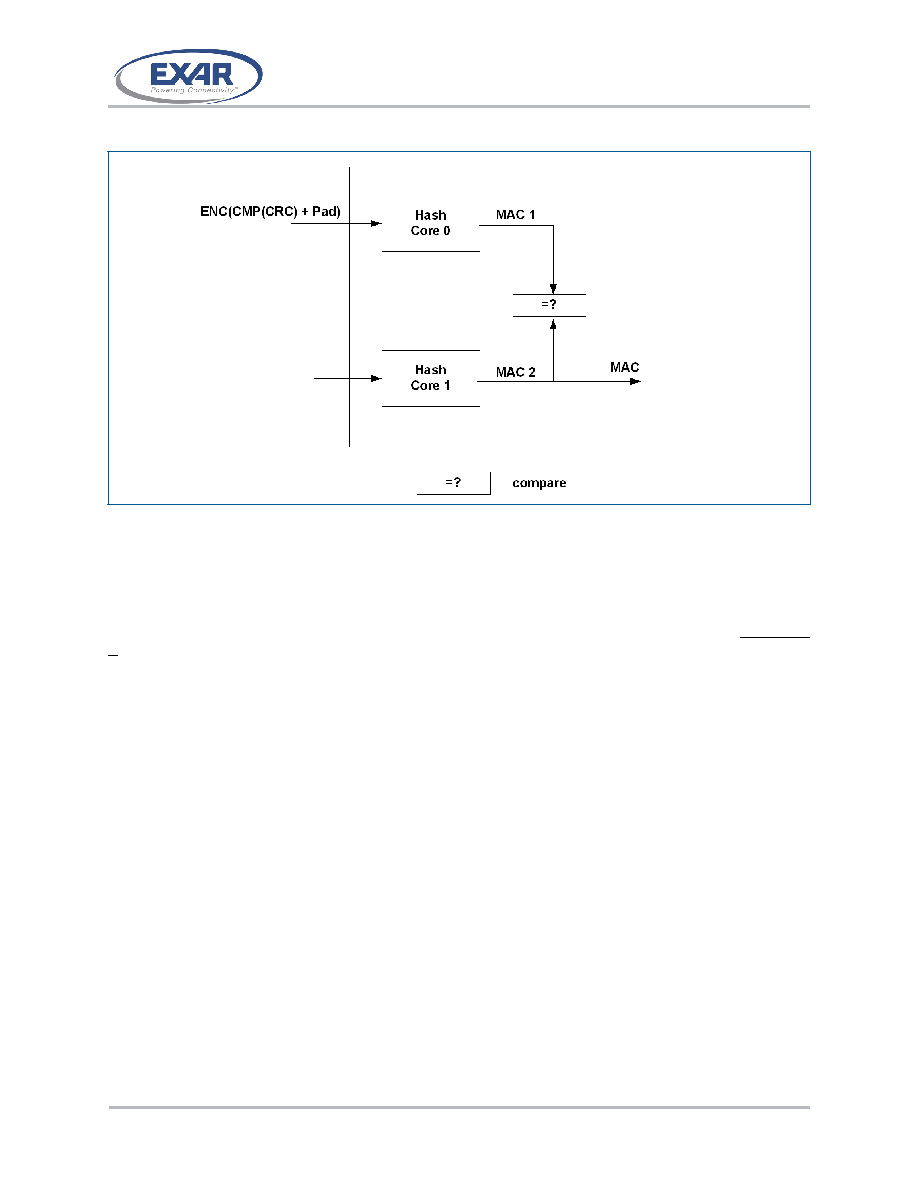- 您現(xiàn)在的位置:買賣IC網(wǎng) > PDF目錄3762 > ST16C1450IQ48-F (Exar Corporation)IC UART FIFO 1B 48TQFP PDF資料下載
參數(shù)資料
| 型號: | ST16C1450IQ48-F |
| 廠商: | Exar Corporation |
| 文件頁數(shù): | 225/295頁 |
| 文件大?。?/td> | 0K |
| 描述: | IC UART FIFO 1B 48TQFP |
| 標準包裝: | 250 |
| 特點: | * |
| 通道數(shù): | 1,UART |
| FIFO's: | 1 字節(jié) |
| 電源電壓: | 2.97 V ~ 5.5 V |
| 帶故障啟動位檢測功能: | 是 |
| 帶調(diào)制解調(diào)器控制功能: | 是 |
| 帶CMOS: | 是 |
| 安裝類型: | 表面貼裝 |
| 封裝/外殼: | 48-TQFP |
| 供應商設備封裝: | 48-TQFP(7x7) |
| 包裝: | 托盤 |
第1頁第2頁第3頁第4頁第5頁第6頁第7頁第8頁第9頁第10頁第11頁第12頁第13頁第14頁第15頁第16頁第17頁第18頁第19頁第20頁第21頁第22頁第23頁第24頁第25頁第26頁第27頁第28頁第29頁第30頁第31頁第32頁第33頁第34頁第35頁第36頁第37頁第38頁第39頁第40頁第41頁第42頁第43頁第44頁第45頁第46頁第47頁第48頁第49頁第50頁第51頁第52頁第53頁第54頁第55頁第56頁第57頁第58頁第59頁第60頁第61頁第62頁第63頁第64頁第65頁第66頁第67頁第68頁第69頁第70頁第71頁第72頁第73頁第74頁第75頁第76頁第77頁第78頁第79頁第80頁第81頁第82頁第83頁第84頁第85頁第86頁第87頁第88頁第89頁第90頁第91頁第92頁第93頁第94頁第95頁第96頁第97頁第98頁第99頁第100頁第101頁第102頁第103頁第104頁第105頁第106頁第107頁第108頁第109頁第110頁第111頁第112頁第113頁第114頁第115頁第116頁第117頁第118頁第119頁第120頁第121頁第122頁第123頁第124頁第125頁第126頁第127頁第128頁第129頁第130頁第131頁第132頁第133頁第134頁第135頁第136頁第137頁第138頁第139頁第140頁第141頁第142頁第143頁第144頁第145頁第146頁第147頁第148頁第149頁第150頁第151頁第152頁第153頁第154頁第155頁第156頁第157頁第158頁第159頁第160頁第161頁第162頁第163頁第164頁第165頁第166頁第167頁第168頁第169頁第170頁第171頁第172頁第173頁第174頁第175頁第176頁第177頁第178頁第179頁第180頁第181頁第182頁第183頁第184頁第185頁第186頁第187頁第188頁第189頁第190頁第191頁第192頁第193頁第194頁第195頁第196頁第197頁第198頁第199頁第200頁第201頁第202頁第203頁第204頁第205頁第206頁第207頁第208頁第209頁第210頁第211頁第212頁第213頁第214頁第215頁第216頁第217頁第218頁第219頁第220頁第221頁第222頁第223頁第224頁當前第225頁第226頁第227頁第228頁第229頁第230頁第231頁第232頁第233頁第234頁第235頁第236頁第237頁第238頁第239頁第240頁第241頁第242頁第243頁第244頁第245頁第246頁第247頁第248頁第249頁第250頁第251頁第252頁第253頁第254頁第255頁第256頁第257頁第258頁第259頁第260頁第261頁第262頁第263頁第264頁第265頁第266頁第267頁第268頁第269頁第270頁第271頁第272頁第273頁第274頁第275頁第276頁第277頁第278頁第279頁第280頁第281頁第282頁第283頁第284頁第285頁第286頁第287頁第288頁第289頁第290頁第291頁第292頁第293頁第294頁第295頁

8201, 8202, 8203, 8204 Acceleration Processor Data Sheet, DS-0157-05
Page 35
Exar Confidential
2.1.4
Data Integrity Model for Encode Operations
This section describes the data integrity model for encode operations using the parity, CRC,
ECC and engine real time verification features described in the previous sections. Figure 2-
6 illustrates the model described below.
Raw data with a PCIe standard CRC (ECRC) from the host enters the 820x over the PCIe
bus through the 820x PCIe core. The PCIe core verifies the ECRC and generates parity
before writing the data into RAM and into the PCIe Inbound Manager (PIM). The PIM
verifies the parity and generates an 8-bit Error Correction Code (ECC8) and enters the data
plus the ECC8 into the source buffer. When a Channel Manager reads the data from the
source buffer, it first verifies the ECC, generates a CRC, and sends the raw data and CRC
to the Compression engine. The Compression engine compresses the data and CRC,
performs real time verification by decompressing the data and verifying the CRC, and sends
the data to the Pad engine. The Pad engine adds padding to the data stream, and sends the
padded data to the encryption engine (the Pad engine does not perform any real time
verification). The Encryption engine encrypts the padded compressed data, performs real
time verification, and sends the result to the Hash engine. The Hash engine calculates the
MAC and performs real time verification on the hash result.
An 8-bit ECC is added to the output data of the Encryption engine and written into the
result buffer. The Channel Manager reads the data from the result buffer, verifies the ECC,
and sends the data to the PCIe Outbound Manager (POM). The POM adds parity before
writing the data into the PCIe Core RAM. When data is read from the PCIe Core RAM by the
PIM, the parity is first verified and an ECRC is generated before the final transformed data
is sent to the host.
Figure 2-5. Hash Engine Real Time Verification
相關PDF資料 |
PDF描述 |
|---|---|
| XR68M752IL32-F | IC UART FIFO 64B DUAL 32QFN |
| XR16M752IL32-F | IC UART FIFO 64B DUAL 32QFN |
| ST16C1450IJ28-F | IC UART FIFO 1B 28PLCC |
| ST16C1450CQ48-F | IC UART FIFO 1B 48TQFP |
| ST16C450IJ44-F | IC UART SINGLE 44PLCC |
相關代理商/技術參數(shù) |
參數(shù)描述 |
|---|---|
| ST16C1450IQ48TR-F | 制造商:Exar Corporation 功能描述:UART 1-CH 1Byte FIFO 3.3V/5V 48-Pin TQFP T/R 制造商:Exar Corporation 功能描述:ST16C1450IQ48TR-F |
| ST16C1451 | 制造商:EXAR 制造商全稱:EXAR 功能描述:2.97V TO 5.5V UART |
| ST16C1451CJ28 | 制造商:EXAR 制造商全稱:EXAR 功能描述:2.97V TO 5.5V UART |
| ST16C1451CP28 | 制造商:EXAR 制造商全稱:EXAR 功能描述:2.97V TO 5.5V UART |
| ST16C1451CQ48 | 制造商:EXAR 制造商全稱:EXAR 功能描述:2.97V TO 5.5V UART |
發(fā)布緊急采購,3分鐘左右您將得到回復。